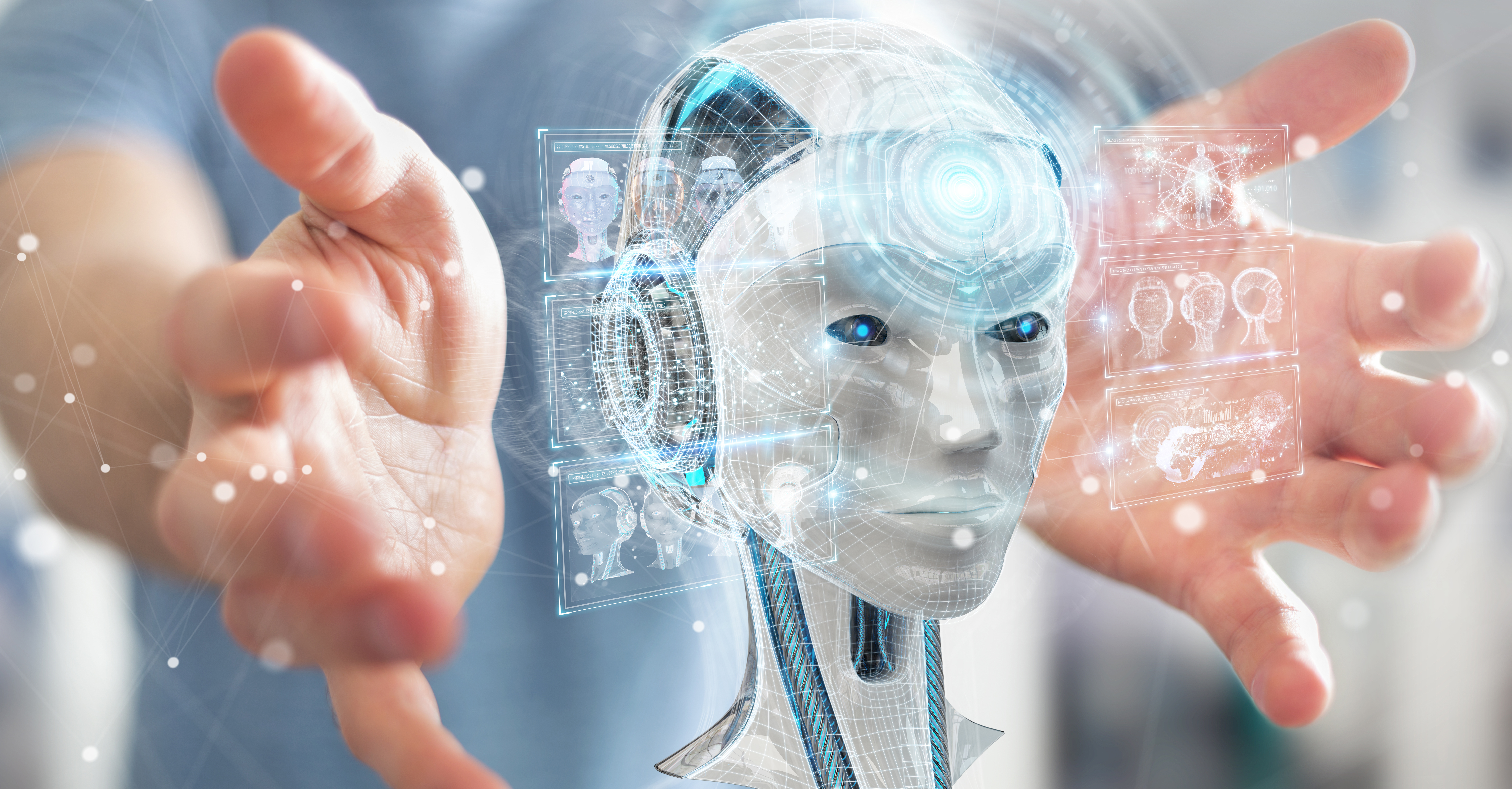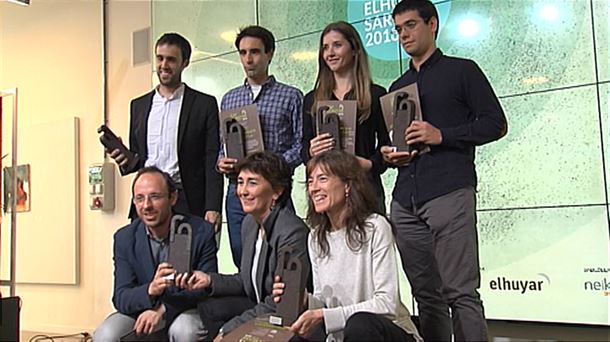The myth of AA: matter and automata
2023/05/29 Xabier Landabidea Urresti - Aisia eta Giza Potentzialean doktorea Iturria: Elhuyar aldizkaria
Text read in the meeting Immaterial 2023 organized by Tabakalera, Laura MM, Ekaitz Cancela Rodríguez, María D. Moreno, and the round table with Gorka Julio Hurtado.
 400
400
DISCLAIMER
I would like to start with a disclaimer: I am not against deep learning and machine learning technologies. They seem to me to be very important developments. But I think these platforms that we call Artificial Intelligence today have been built on a foundational illusion, and I think it's important to anticipate fascination to be able to understand the importance of these technologies. Turning to the positive, I believe that they open up the opportunity and the need to rethink our cultural and epistemic institutions, such as the written text, but not only.
In this respect, I would like to mention three ideas today: Hypea, Materiality and Automata.
HYPEA. Hypea and the myth
Artificial intelligence is undoubtedly the hype of the time. Myth of the time. In fact, technology and myth have maintained a close relationship from the very beginning. Let's remember that Prometheus gave humans the theft of fire-making technology.
The myth is the story. Report. Collective reporting with references of origin and destination. It has a complex and unique relationship with Egia. On one hand, it is sewn and stained with elements that can be distorted (and that have been frequent). On the other hand, the myth is conceived as an indicator of a higher, higher, deeper truth than the objective. Below all the lies, above all the truths, as the witches of Akelarre sang.
Myths have a great relationship with God. And in a world of missing, superrich gods. They say that now the bile controls the oracles. Money and gods. And talking about money, how to forget about crypto-bras. In Basque the crypts. ChatGPTbros. Remember the moment Matt Damon (Fortune Favors the Brave). At a time of great hype, the actor’s recommendation to invest in bitcoins may now seem ridiculous and pathetic (it was not, of course, the only known character who made this recommendation).
Hypea is not done alone, you have to. “More important than fire or electricity” (Sundar Pichai), “Errobot will do everything better than us” (Elon Muskiz), “It is the real motor that represents people” (Kai-Fu Lee). … Everything is an opportunity, everything is a possibility, everything is an instrument that increases productivity.
The myth we are selling has two characteristics:
1) Artificial intelligence is not only real, it is inevitable.
2) It can lead to risks and damage, but let us not focus now on it, let us analyze the possibilities (if not used by another person).
Why this insistence on investing in idea and product? Because Hypea creates the future.
We channel destiny through myth. In this case, the myth of Artificial Intelligence has a long and comprehensive novel, film, cartoons, comics, series, etc. ZiFi. When Frankenstein and Skynet, Matrix and Metropolis, HAL-9000 and Alien’s Ash don’t tell us about “emergent features” they wake us up.
Fear and fascination. Risk and promise. Prometheus feels like a modern moment. And who doesn't want to be a modern Prometheus? Who would be allowed to stay out of the project of the modern prometheus? Are you ready not to hop on the AA hype-train and stay foolish when THE WHOLE WORLD is already learning to make better prompt? Fear of missing out old renovated. New skin for the old ceremony.
MATTER (LITY). Four semiotic notes
Although all human communication has its materiality, the discourse of the capitalist digital has shown in recent decades a strong tradition of forgetting materiality. Consider, for example, expressions such as “virtual reality” or “cloud” or “metaverse”. Eternal digital transcendence, left behind and down, seems to be a promised figure. The compress, like the lack of blood and red color in the ads, is symptomatic.
But let us return to the necessary materiality of communication and information technologies.
Recalling the basic semiology: meaning is not transported. Meaning is never transported. Human beings are not telepatas, so we can't direct one thought or one emotion to the attention of another, because we don't have the ability to do it.
Faced with this inability we have developed communication technologies, which are the skills to transmit something different to thought or emotion (or object, or concept, or give it up). In addition to artificial intelligence, two other letters A: Indicator and meaning. One (sign and message, signifier) is transmitted and received, the other (meaning, meaning, meaning) is created in the negotiation between issuers and receivers.
The technologies that we've started to call artificial intelligence, but they don't work with meaning. They have no access to the referent or the meaning. They have no concept of meaning. Large Language Model works only with indicators, only with indicators. AA exist on the map, not on the territory. They're somehow cartographers who can't step on the Earth, who don't know that maps refer to territory.
The computer engineers who accompany me tell me that this is not important. That the machine doesn't have to understand what it means to make it useful for us. In addition, we are at the beginning and, by iteration, from training to training, with the help of the new machine pedagogues, we are obliged to overcome these first errors. It's not fair that these groundbreaking technologies get us down to our parameters because they work on other parameters and we don't really care as it works.
I want to propose here the opposite, that this boundary between map and territory, between indicator and meaning, will not be overcome by human iteration or training, because AI technologies will not develop symbolic thought or processing with a spontaneous singularity. That the house will be linked to the words of house and house, house, house, as well as photographs and drawings of houses of all kinds, but not to the living entity that we associate with these signs, as we have programmed machines to relate names to names (and verbs, adjectives, etc. ), and not to relate to what he calls.
And this brings me to the final idea. I want to introduce you to the automaton that I didn't know how to read but read it all.
AUTOMATA READER
The feeling of movement was created by the collection of technologies that today we call cinema (kinema). But it's had other names. Taumatropo. Faraday wheel. [Phenachystipation]. Zootrope. Uhcatuis cartoons. Reynsund Optical Theatre... Now that we talk about film, we say things, but that has required a relatively long socio-technological crystallization of about a hundred years.
Something similar will happen with the technologies that we're probably calling "Artificial Intelligence." They will take other forms, other names, other social functions. We will naturalize the rites and customs of their environment, create new habits and forgetfulness. You can't know exactly what forms and what names they're going to take.
For the moment, but I want to make a proposal to designate these networks of algorithms that read huge corpus of text. If the cinematograph produced the sensation of movement, I think these new chatbots produce a sense of knowledge. Gnosigrapher? Gnoseoscope? Epistemograph? How do we call machines capable of producing results that give sense but don't make sense?
You read everything but you haven't read anything. They offer us answers, but they have no concept of meaning. I see two possible interpretations. One: machines read and we can reclaim the end of the reading (readers who do not have time to read, viewers who watch videos on channel 1.5x or 2x and automata readers who can read everything but have not read anything, offering textual plans without symbolic dimensions). Two: machines don't read and we'll need new dictionaries and mythologies to index and think, ask and prompt, lie and hallucinate, to better say and think about new relatively new realities like glitch and function.
In the Science Fiction Coriolis role-playing game, based on the stories of a thousand and one nights, these artificial intelligences are called “Db Jinn” (geniuses or geniuses of seminitic mythologies). I like it because it suggests a relationship with the deeply different nature of the device. Genius or not, we've taken them out of the bottle and the mitogators are creating new myths about them. I believe that in addition to technology, the ownership of technology and its uses, there is room for cultivating, questioning and guessing myths about technologies.
“The picture is true, and film is true 24 times a second,” said Jean Luc Godard.
How many truths per second does AI say?
Thank you very much.

Gai honi buruzko eduki gehiago
Elhuyarrek garatutako teknologia





